Ebola Outbreak in Sierra Leone Research Report
VerifiedAdded on 2019/09/16
|8
|1568
|251
Report
AI Summary
This report details a research study on the Ebola outbreak in Sierra Leone, focusing on the collaboration between hospitals and public health responses, the link between disease proliferation and poverty/sanitation, and the priorities of public health departments. The research employed a qualitative methodology, including interviews with 100 adults and children in both rural and urban communities. Data analysis was conducted using Microsoft Excel, and the findings highlight the impact of the outbreak on children, the varying responses across different regions, and the need for improved interagency planning. The report also includes recommendations for future preparedness and response to similar health crises, emphasizing the importance of community engagement and addressing socio-economic factors.
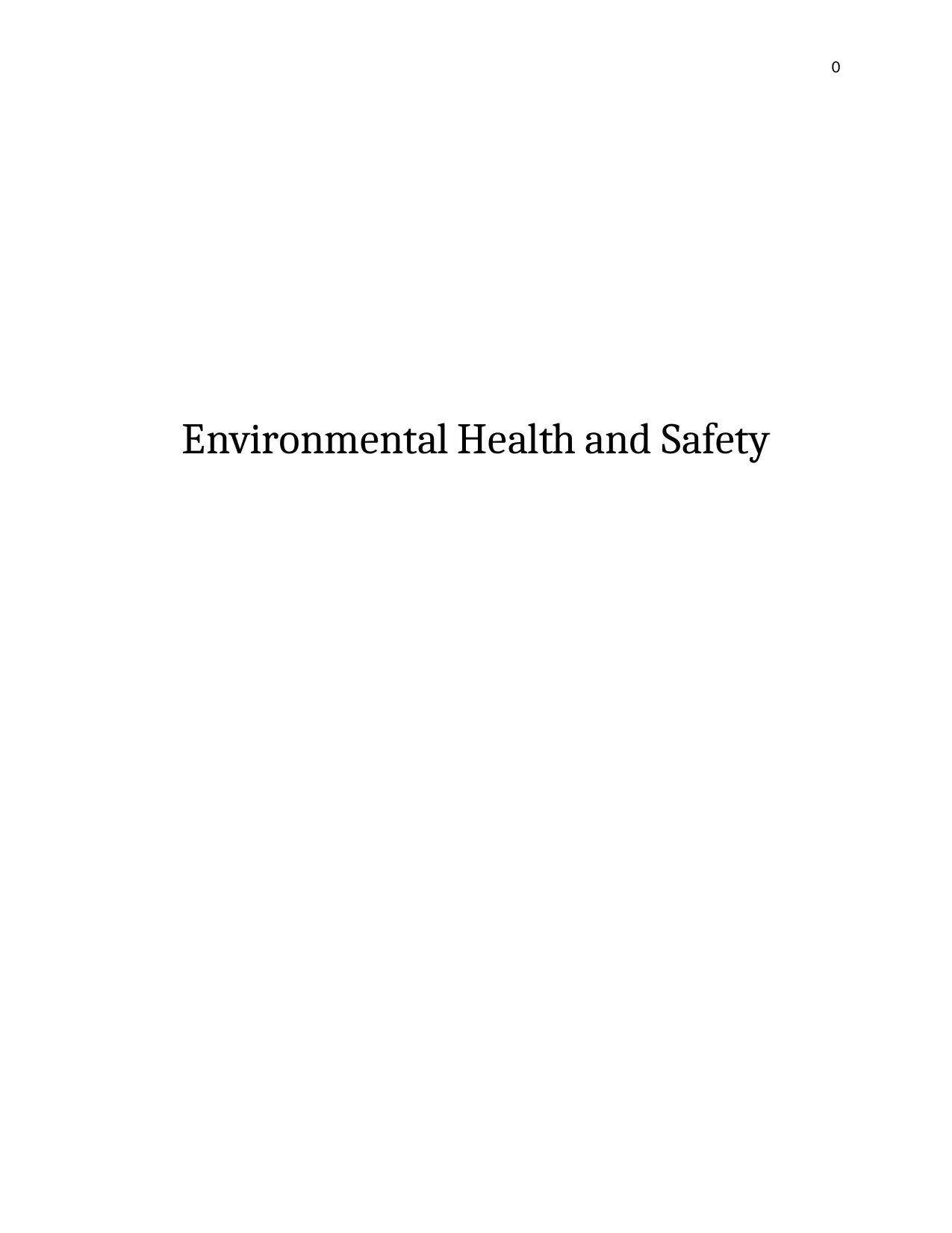
0
Environmental Health and Safety
Environmental Health and Safety
Paraphrase This Document
Need a fresh take? Get an instant paraphrase of this document with our AI Paraphraser

1
Introduction
In 2014, the outbreak of Ebola Virus in Sierra Leone was declared as an emergency in the
international public health. Many organizations commissioned the research on this, which
involved undertaking of rapid evaluation of the situation in three affected countries of Guinea,
Sierra Leone and Liberia. Researchers have reported that though Ebola trailed the death and
sickness in its wake, outbreak of Ebola had serious implications which reached beyond the direct
influence over the health of people. The outbreak of Ebola Virus had caused wide problems like
economic downturn, food shortages, restrictions on movement, closure of schools. In this
proposal researcher has mentioned about the methodologies he will be using for completing his
research on Ebola Outbreak in Sierra Leone. Furthermore he will be discussing the data analysis
and conclusion and recommendations for pre-planning and precautions against this disease.
Research Aim
To identify the collaboration/connect between hospitals and public health response
To assess the link between proliferation of disease and poverty/sanitation
To understand the priorities of the departments of public health in Sierra Leone
Methodology
On-Field work was conducted by the community based companies in Sierra Leone and Liberia.
Selective sampling method was used. The sites of sampling were taken which represented bot
rural and urban communities, various regions of the nation and the locations at which there were
low and high number of cases of Ebola. The adults and children took active part in the one to one
interview and small group discussions. The qualitative methodology made people tell their
Introduction
In 2014, the outbreak of Ebola Virus in Sierra Leone was declared as an emergency in the
international public health. Many organizations commissioned the research on this, which
involved undertaking of rapid evaluation of the situation in three affected countries of Guinea,
Sierra Leone and Liberia. Researchers have reported that though Ebola trailed the death and
sickness in its wake, outbreak of Ebola had serious implications which reached beyond the direct
influence over the health of people. The outbreak of Ebola Virus had caused wide problems like
economic downturn, food shortages, restrictions on movement, closure of schools. In this
proposal researcher has mentioned about the methodologies he will be using for completing his
research on Ebola Outbreak in Sierra Leone. Furthermore he will be discussing the data analysis
and conclusion and recommendations for pre-planning and precautions against this disease.
Research Aim
To identify the collaboration/connect between hospitals and public health response
To assess the link between proliferation of disease and poverty/sanitation
To understand the priorities of the departments of public health in Sierra Leone
Methodology
On-Field work was conducted by the community based companies in Sierra Leone and Liberia.
Selective sampling method was used. The sites of sampling were taken which represented bot
rural and urban communities, various regions of the nation and the locations at which there were
low and high number of cases of Ebola. The adults and children took active part in the one to one
interview and small group discussions. The qualitative methodology made people tell their
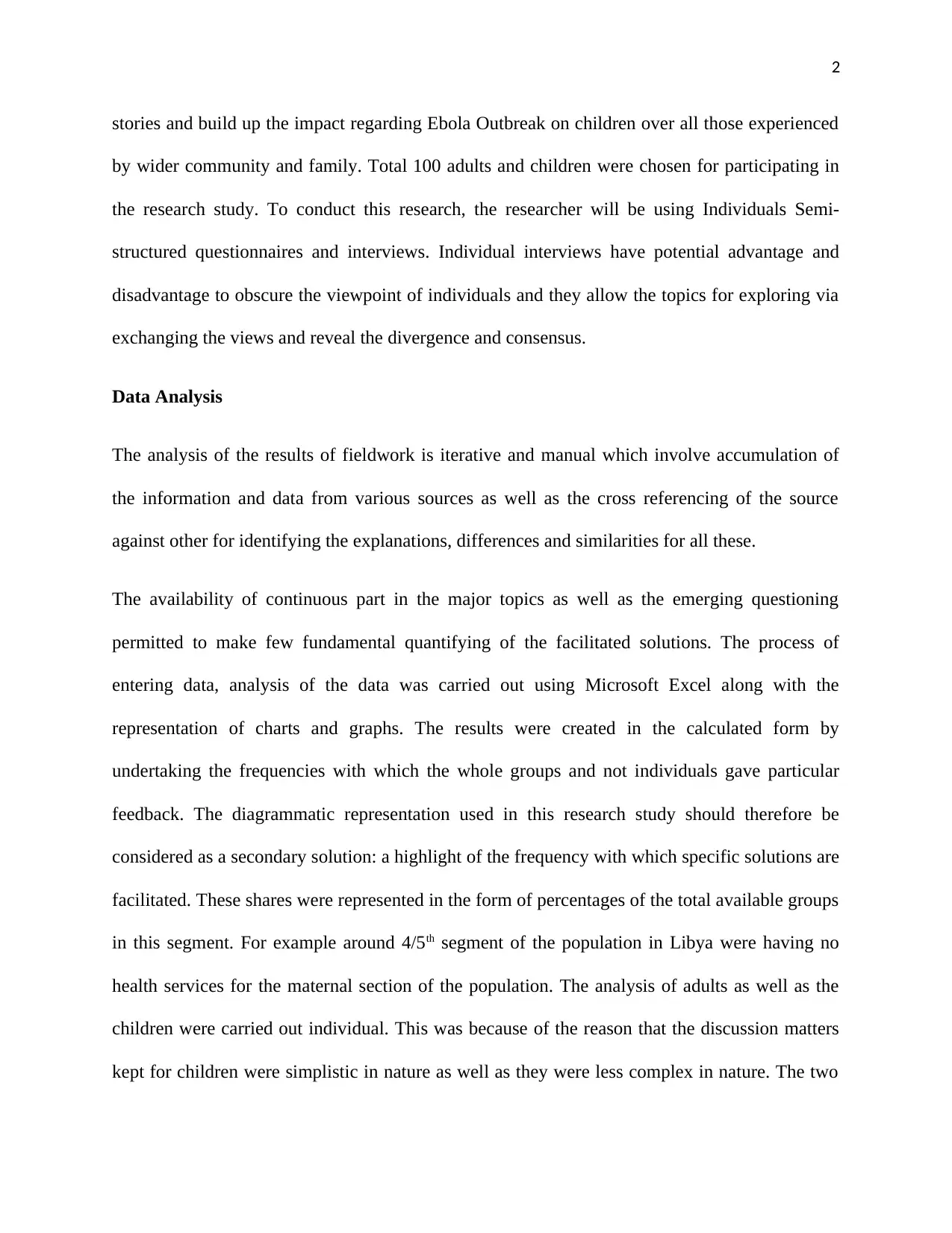
2
stories and build up the impact regarding Ebola Outbreak on children over all those experienced
by wider community and family. Total 100 adults and children were chosen for participating in
the research study. To conduct this research, the researcher will be using Individuals Semi-
structured questionnaires and interviews. Individual interviews have potential advantage and
disadvantage to obscure the viewpoint of individuals and they allow the topics for exploring via
exchanging the views and reveal the divergence and consensus.
Data Analysis
The analysis of the results of fieldwork is iterative and manual which involve accumulation of
the information and data from various sources as well as the cross referencing of the source
against other for identifying the explanations, differences and similarities for all these.
The availability of continuous part in the major topics as well as the emerging questioning
permitted to make few fundamental quantifying of the facilitated solutions. The process of
entering data, analysis of the data was carried out using Microsoft Excel along with the
representation of charts and graphs. The results were created in the calculated form by
undertaking the frequencies with which the whole groups and not individuals gave particular
feedback. The diagrammatic representation used in this research study should therefore be
considered as a secondary solution: a highlight of the frequency with which specific solutions are
facilitated. These shares were represented in the form of percentages of the total available groups
in this segment. For example around 4/5th segment of the population in Libya were having no
health services for the maternal section of the population. The analysis of adults as well as the
children were carried out individual. This was because of the reason that the discussion matters
kept for children were simplistic in nature as well as they were less complex in nature. The two
stories and build up the impact regarding Ebola Outbreak on children over all those experienced
by wider community and family. Total 100 adults and children were chosen for participating in
the research study. To conduct this research, the researcher will be using Individuals Semi-
structured questionnaires and interviews. Individual interviews have potential advantage and
disadvantage to obscure the viewpoint of individuals and they allow the topics for exploring via
exchanging the views and reveal the divergence and consensus.
Data Analysis
The analysis of the results of fieldwork is iterative and manual which involve accumulation of
the information and data from various sources as well as the cross referencing of the source
against other for identifying the explanations, differences and similarities for all these.
The availability of continuous part in the major topics as well as the emerging questioning
permitted to make few fundamental quantifying of the facilitated solutions. The process of
entering data, analysis of the data was carried out using Microsoft Excel along with the
representation of charts and graphs. The results were created in the calculated form by
undertaking the frequencies with which the whole groups and not individuals gave particular
feedback. The diagrammatic representation used in this research study should therefore be
considered as a secondary solution: a highlight of the frequency with which specific solutions are
facilitated. These shares were represented in the form of percentages of the total available groups
in this segment. For example around 4/5th segment of the population in Libya were having no
health services for the maternal section of the population. The analysis of adults as well as the
children were carried out individual. This was because of the reason that the discussion matters
kept for children were simplistic in nature as well as they were less complex in nature. The two
⊘ This is a preview!⊘
Do you want full access?
Subscribe today to unlock all pages.

Trusted by 1+ million students worldwide
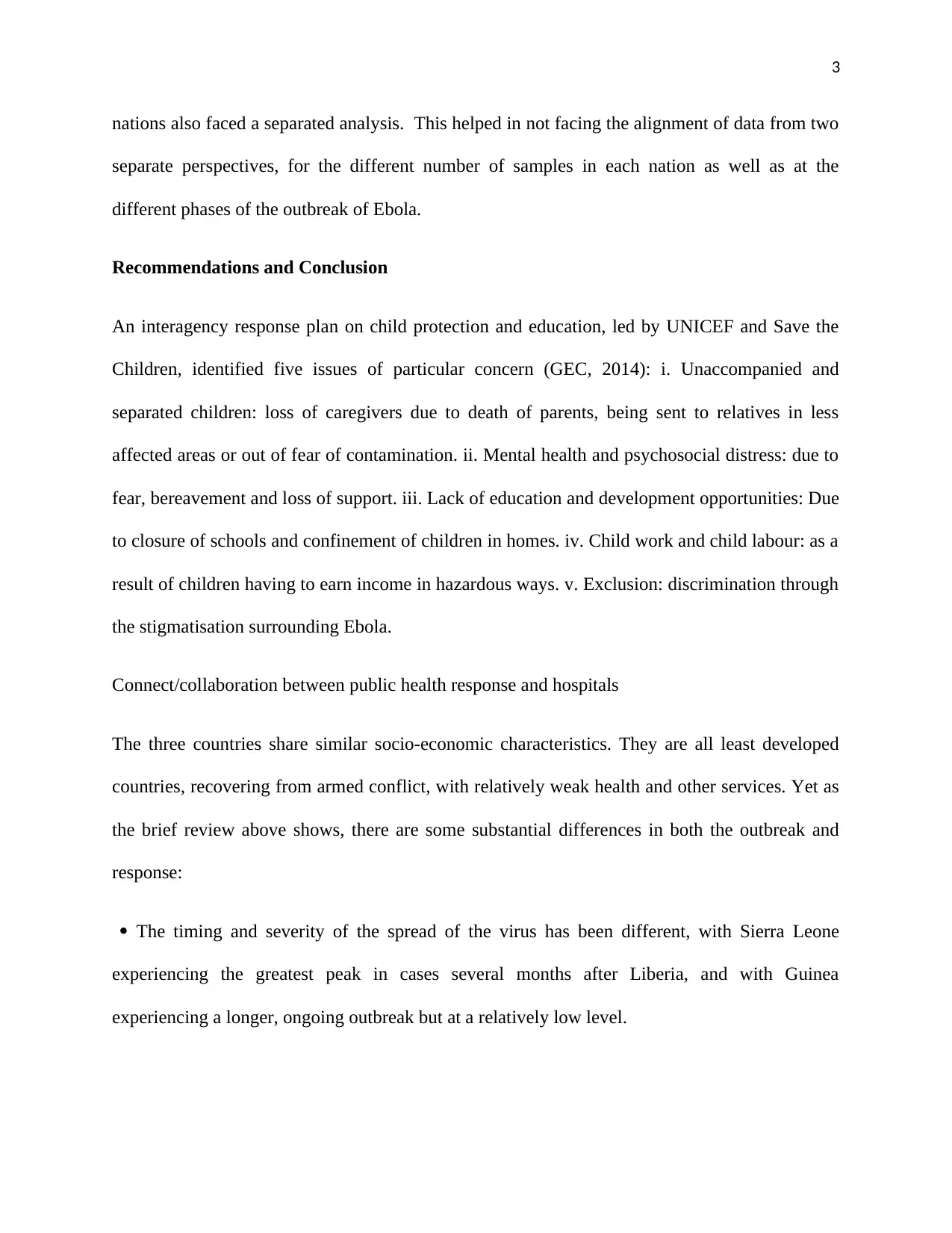
3
nations also faced a separated analysis. This helped in not facing the alignment of data from two
separate perspectives, for the different number of samples in each nation as well as at the
different phases of the outbreak of Ebola.
Recommendations and Conclusion
An interagency response plan on child protection and education, led by UNICEF and Save the
Children, identified five issues of particular concern (GEC, 2014): i. Unaccompanied and
separated children: loss of caregivers due to death of parents, being sent to relatives in less
affected areas or out of fear of contamination. ii. Mental health and psychosocial distress: due to
fear, bereavement and loss of support. iii. Lack of education and development opportunities: Due
to closure of schools and confinement of children in homes. iv. Child work and child labour: as a
result of children having to earn income in hazardous ways. v. Exclusion: discrimination through
the stigmatisation surrounding Ebola.
Connect/collaboration between public health response and hospitals
The three countries share similar socio-economic characteristics. They are all least developed
countries, recovering from armed conflict, with relatively weak health and other services. Yet as
the brief review above shows, there are some substantial differences in both the outbreak and
response:
The timing and severity of the spread of the virus has been different, with Sierra Leone
experiencing the greatest peak in cases several months after Liberia, and with Guinea
experiencing a longer, ongoing outbreak but at a relatively low level.
nations also faced a separated analysis. This helped in not facing the alignment of data from two
separate perspectives, for the different number of samples in each nation as well as at the
different phases of the outbreak of Ebola.
Recommendations and Conclusion
An interagency response plan on child protection and education, led by UNICEF and Save the
Children, identified five issues of particular concern (GEC, 2014): i. Unaccompanied and
separated children: loss of caregivers due to death of parents, being sent to relatives in less
affected areas or out of fear of contamination. ii. Mental health and psychosocial distress: due to
fear, bereavement and loss of support. iii. Lack of education and development opportunities: Due
to closure of schools and confinement of children in homes. iv. Child work and child labour: as a
result of children having to earn income in hazardous ways. v. Exclusion: discrimination through
the stigmatisation surrounding Ebola.
Connect/collaboration between public health response and hospitals
The three countries share similar socio-economic characteristics. They are all least developed
countries, recovering from armed conflict, with relatively weak health and other services. Yet as
the brief review above shows, there are some substantial differences in both the outbreak and
response:
The timing and severity of the spread of the virus has been different, with Sierra Leone
experiencing the greatest peak in cases several months after Liberia, and with Guinea
experiencing a longer, ongoing outbreak but at a relatively low level.
Paraphrase This Document
Need a fresh take? Get an instant paraphrase of this document with our AI Paraphraser
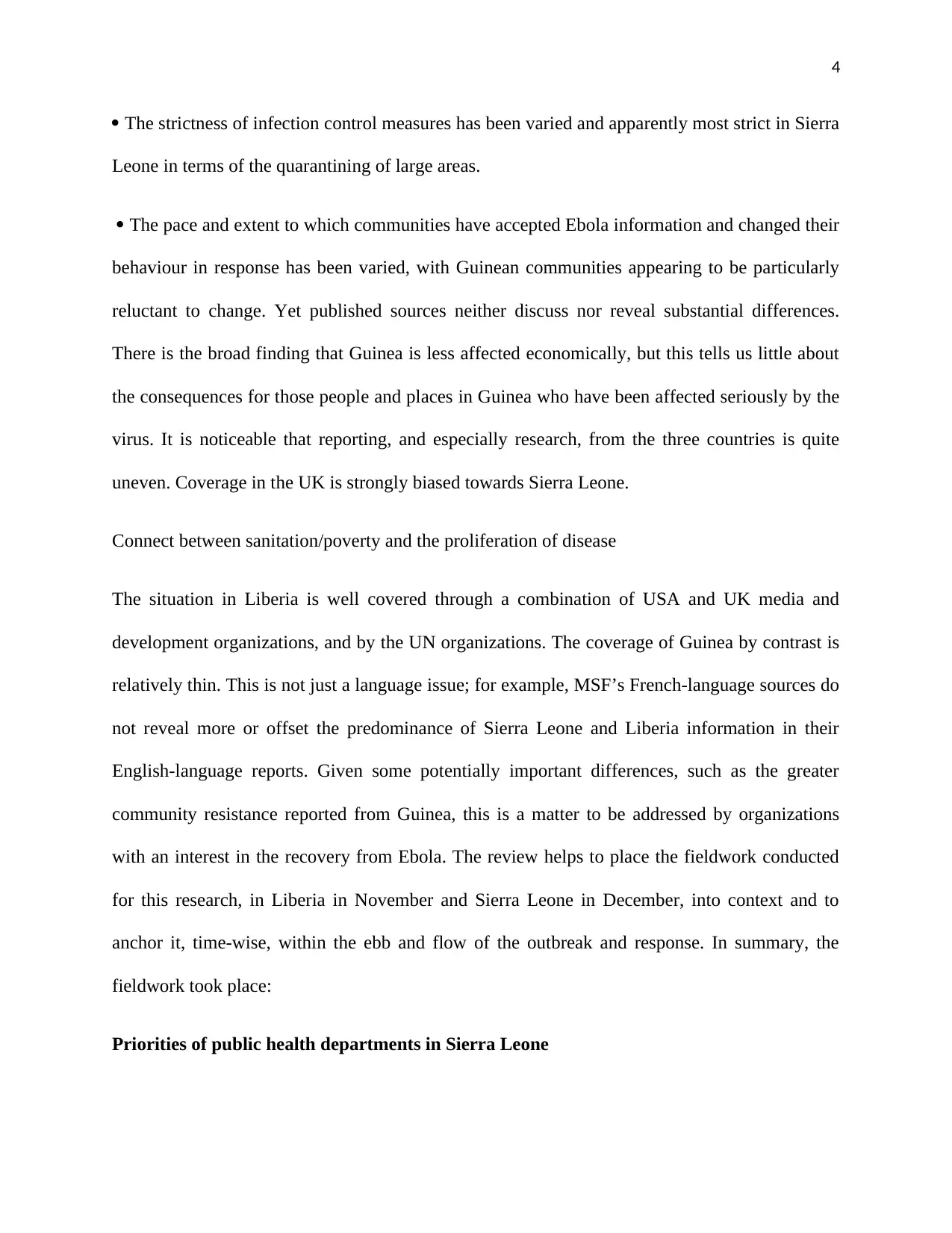
4
The strictness of infection control measures has been varied and apparently most strict in Sierra
Leone in terms of the quarantining of large areas.
The pace and extent to which communities have accepted Ebola information and changed their
behaviour in response has been varied, with Guinean communities appearing to be particularly
reluctant to change. Yet published sources neither discuss nor reveal substantial differences.
There is the broad finding that Guinea is less affected economically, but this tells us little about
the consequences for those people and places in Guinea who have been affected seriously by the
virus. It is noticeable that reporting, and especially research, from the three countries is quite
uneven. Coverage in the UK is strongly biased towards Sierra Leone.
Connect between sanitation/poverty and the proliferation of disease
The situation in Liberia is well covered through a combination of USA and UK media and
development organizations, and by the UN organizations. The coverage of Guinea by contrast is
relatively thin. This is not just a language issue; for example, MSF’s French-language sources do
not reveal more or offset the predominance of Sierra Leone and Liberia information in their
English-language reports. Given some potentially important differences, such as the greater
community resistance reported from Guinea, this is a matter to be addressed by organizations
with an interest in the recovery from Ebola. The review helps to place the fieldwork conducted
for this research, in Liberia in November and Sierra Leone in December, into context and to
anchor it, time-wise, within the ebb and flow of the outbreak and response. In summary, the
fieldwork took place:
Priorities of public health departments in Sierra Leone
The strictness of infection control measures has been varied and apparently most strict in Sierra
Leone in terms of the quarantining of large areas.
The pace and extent to which communities have accepted Ebola information and changed their
behaviour in response has been varied, with Guinean communities appearing to be particularly
reluctant to change. Yet published sources neither discuss nor reveal substantial differences.
There is the broad finding that Guinea is less affected economically, but this tells us little about
the consequences for those people and places in Guinea who have been affected seriously by the
virus. It is noticeable that reporting, and especially research, from the three countries is quite
uneven. Coverage in the UK is strongly biased towards Sierra Leone.
Connect between sanitation/poverty and the proliferation of disease
The situation in Liberia is well covered through a combination of USA and UK media and
development organizations, and by the UN organizations. The coverage of Guinea by contrast is
relatively thin. This is not just a language issue; for example, MSF’s French-language sources do
not reveal more or offset the predominance of Sierra Leone and Liberia information in their
English-language reports. Given some potentially important differences, such as the greater
community resistance reported from Guinea, this is a matter to be addressed by organizations
with an interest in the recovery from Ebola. The review helps to place the fieldwork conducted
for this research, in Liberia in November and Sierra Leone in December, into context and to
anchor it, time-wise, within the ebb and flow of the outbreak and response. In summary, the
fieldwork took place:
Priorities of public health departments in Sierra Leone
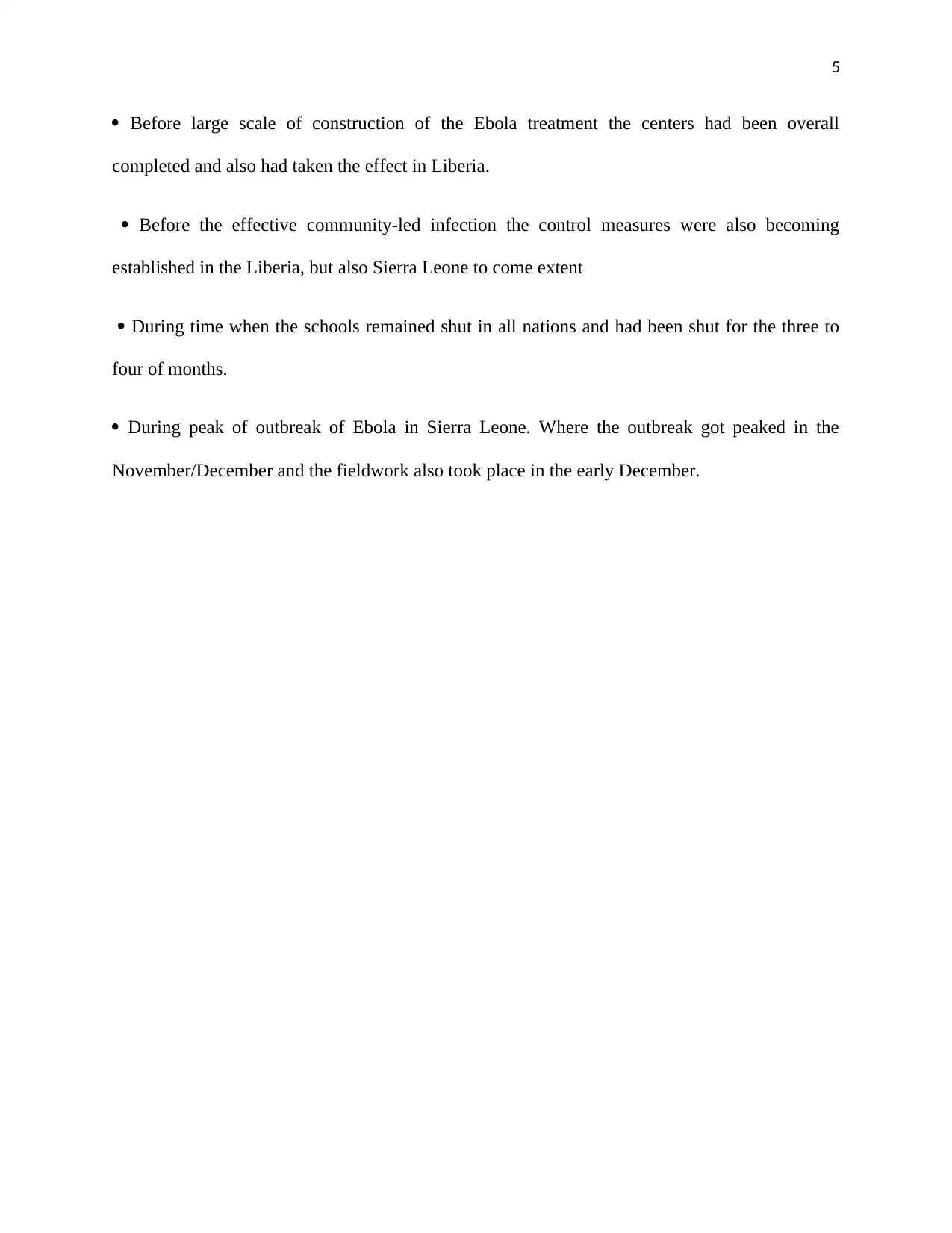
5
Before large scale of construction of the Ebola treatment the centers had been overall
completed and also had taken the effect in Liberia.
Before the effective community-led infection the control measures were also becoming
established in the Liberia, but also Sierra Leone to come extent
During time when the schools remained shut in all nations and had been shut for the three to
four of months.
During peak of outbreak of Ebola in Sierra Leone. Where the outbreak got peaked in the
November/December and the fieldwork also took place in the early December.
Before large scale of construction of the Ebola treatment the centers had been overall
completed and also had taken the effect in Liberia.
Before the effective community-led infection the control measures were also becoming
established in the Liberia, but also Sierra Leone to come extent
During time when the schools remained shut in all nations and had been shut for the three to
four of months.
During peak of outbreak of Ebola in Sierra Leone. Where the outbreak got peaked in the
November/December and the fieldwork also took place in the early December.
⊘ This is a preview!⊘
Do you want full access?
Subscribe today to unlock all pages.

Trusted by 1+ million students worldwide

6
REFERENCES
Baize, S., Pannetier, D., Oestereich, L., Rieger, T., Koivogui, L., Magassouba, N. F., ... &
Tiffany, A. (2014). Emergence of Zaire Ebola virus disease in Guinea. New England Journal of
Medicine, 371(15), 1418-1425.
Csikszentmihalyi, M. (2014). Toward a psychology of optimal experience (pp. 209-226).
Springer Netherlands.
Dennett, D.C., (2015). Elbow room: The varieties of free will worth wanting. MIT Press.
Monroe, A. E., Dillon, K. D., & Malle, B. F. (2014). Bringing free will down to Earth: People’s
psychological concept of free will and its role in moral judgment. Consciousness and
cognition, 27, 100-108.
Nahmias, E. (2015). Why we have free will. Scientific American, 312(1), 76-79.
President Bashar al-Assad Interview: "It's our Right to Defend our Country against any Kind of
Invasion." (2017). Global Research. Retrieved 26 April 2017, from
http://www.globalresearch.ca/president-bashar-al-assad-interview-its-our-right-to-defend-our-
country-against-any-kind-of-invasion/5557209
REFERENCES
Baize, S., Pannetier, D., Oestereich, L., Rieger, T., Koivogui, L., Magassouba, N. F., ... &
Tiffany, A. (2014). Emergence of Zaire Ebola virus disease in Guinea. New England Journal of
Medicine, 371(15), 1418-1425.
Csikszentmihalyi, M. (2014). Toward a psychology of optimal experience (pp. 209-226).
Springer Netherlands.
Dennett, D.C., (2015). Elbow room: The varieties of free will worth wanting. MIT Press.
Monroe, A. E., Dillon, K. D., & Malle, B. F. (2014). Bringing free will down to Earth: People’s
psychological concept of free will and its role in moral judgment. Consciousness and
cognition, 27, 100-108.
Nahmias, E. (2015). Why we have free will. Scientific American, 312(1), 76-79.
President Bashar al-Assad Interview: "It's our Right to Defend our Country against any Kind of
Invasion." (2017). Global Research. Retrieved 26 April 2017, from
http://www.globalresearch.ca/president-bashar-al-assad-interview-its-our-right-to-defend-our-
country-against-any-kind-of-invasion/5557209
Paraphrase This Document
Need a fresh take? Get an instant paraphrase of this document with our AI Paraphraser
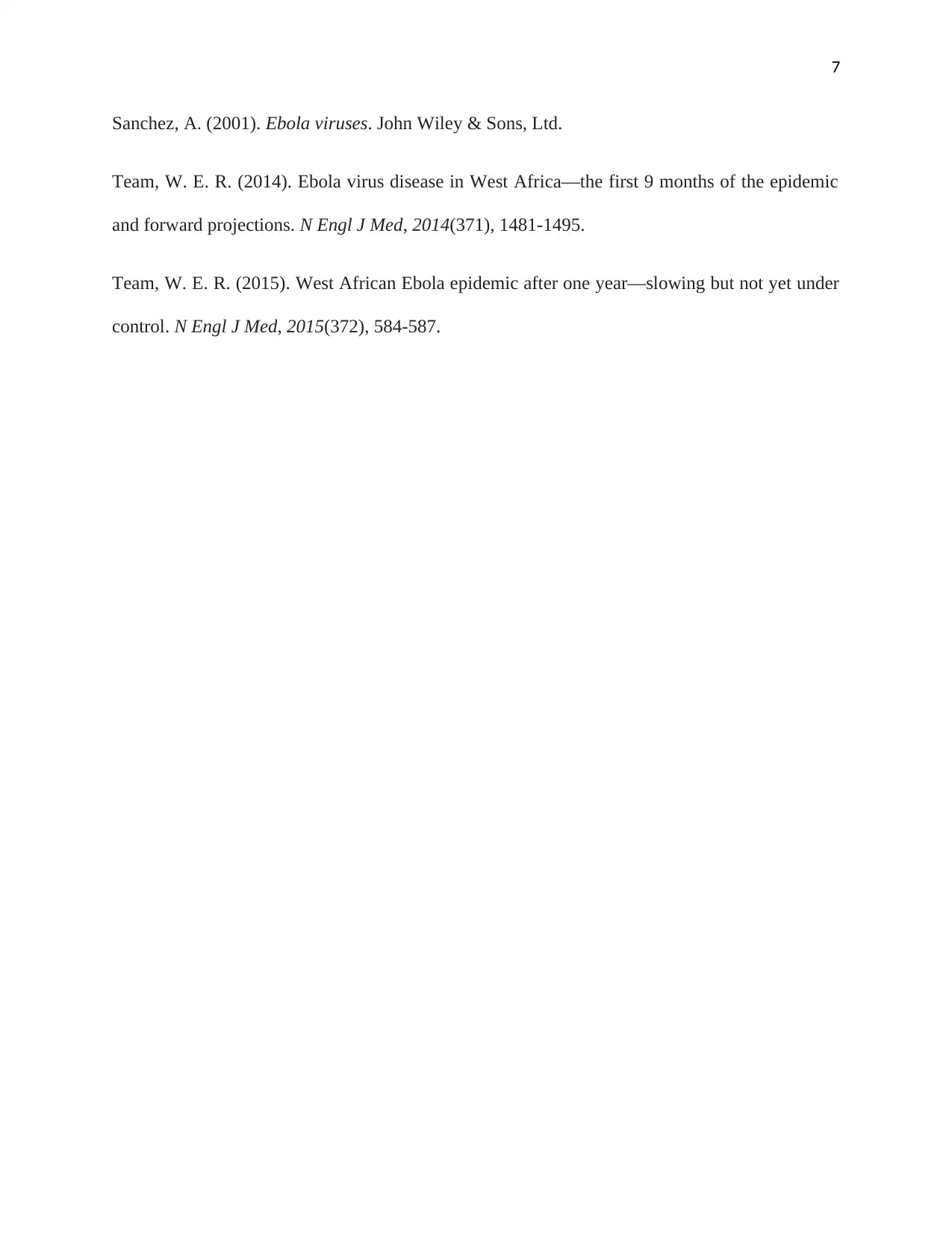
7
Sanchez, A. (2001). Ebola viruses. John Wiley & Sons, Ltd.
Team, W. E. R. (2014). Ebola virus disease in West Africa—the first 9 months of the epidemic
and forward projections. N Engl J Med, 2014(371), 1481-1495.
Team, W. E. R. (2015). West African Ebola epidemic after one year—slowing but not yet under
control. N Engl J Med, 2015(372), 584-587.
Sanchez, A. (2001). Ebola viruses. John Wiley & Sons, Ltd.
Team, W. E. R. (2014). Ebola virus disease in West Africa—the first 9 months of the epidemic
and forward projections. N Engl J Med, 2014(371), 1481-1495.
Team, W. E. R. (2015). West African Ebola epidemic after one year—slowing but not yet under
control. N Engl J Med, 2015(372), 584-587.
1 out of 8
Related Documents
Your All-in-One AI-Powered Toolkit for Academic Success.
+13062052269
info@desklib.com
Available 24*7 on WhatsApp / Email
![[object Object]](/_next/static/media/star-bottom.7253800d.svg)
Unlock your academic potential
Copyright © 2020–2025 A2Z Services. All Rights Reserved. Developed and managed by ZUCOL.





